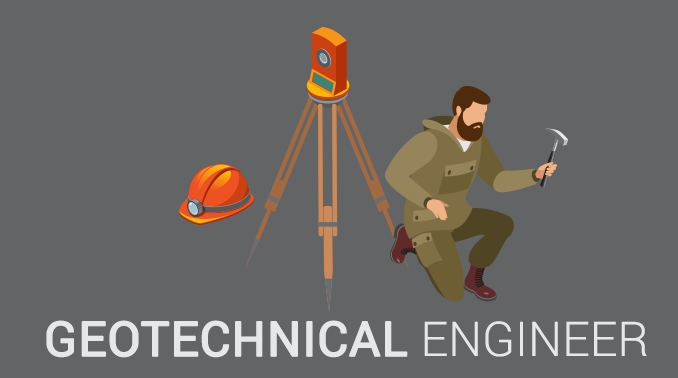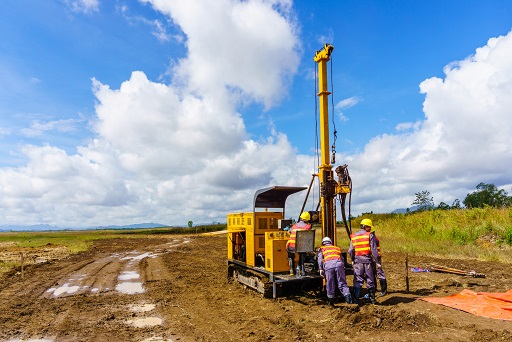10 Simple Techniques For Consulting Engineers
10 Simple Techniques For Consulting Engineers
Blog Article
Consulting Engineers Can Be Fun For Everyone
Table of ContentsThings about Consulting EngineersHow Consulting Engineers can Save You Time, Stress, and Money.What Does Consulting Engineers Do?Consulting Engineers for BeginnersGet This Report about Consulting EngineersSome Of Consulting EngineersWhat Does Consulting Engineers Mean?
In situations where the existing soil can not support a structure, ground renovation techniques are used. These can include compaction, dirt support with geosynthetics, and the addition of stabilizing representatives.Grouting strategies fill gaps in the dirt to enhance bearing capacity and decrease negotiation, producing a safer environment for residents in earthquake-prone regions. Building and construction websites might provide challenging soil problems, such as large clay or karst topography.

The 2-Minute Rule for Consulting Engineers
Skyscrapers in city facilities commonly deal with the difficulty of limited area and the visibility of neighboring structures. Geotechnical engineering has played an important function in the success of such projects by utilizing cutting-edge foundation designs that lessen influence on the surrounding setting. By utilizing techniques like underpinning and micro-piling, engineers have actually had the ability to support high-rises on sites that were formerly believed improper.
Whether it's the structure of a brand-new home, the bases of an enormous bridge, or the stablizing of a high-rise building, the function of geotechnical engineering is universal. By understanding the planet, we lead the way for smarter, more powerful, and safer construction practices (Consulting Engineers). The cooperative relationship between geotechnical engineering and modern-day building is one of long-lasting value and need
The Ultimate Guide To Consulting Engineers
To offer the ideal experiences, we utilize modern technologies like cookies to shop and/or access device info. Granting these modern technologies will permit us to process data such as searching habits or distinct IDs on this website. Not consenting or taking out consent, might negatively affect specific features and functions. The technical storage or gain access to is purely required for the legit function of making it possible for making use of a specific service clearly asked for by the client or individual, or for the sole purpose of executing the transmission of a communication over a digital communications network.
They conduct website examinations, gather samples, execute laboratory tests, and evaluate information to assess the suitability of the ground for building tasks. Based on their searchings for, geotechnical designers provide referrals for foundation style, slope stability, preserving frameworks, and mitigation of geotechnical risks - Consulting Engineers. They work together with various other specialists, such as designers, structural engineers, and construction groups, to make certain that geotechnical factors to consider are integrated right into the total job design and implementation
They translate the data to comprehend the homes and actions of the soil and rock, including their stamina, permeability, compaction qualities, and groundwater problems. Geotechnical Evaluation and Layout: Geotechnical designers assess the information gathered during site investigations to assess the stability and suitability of the site for construction tasks. They do geotechnical calculations and modeling to assess factors such as bearing ability, negotiation, slope stability, lateral planet pressures, and groundwater circulation.
Consulting Engineers Can Be Fun For Anyone
Foundation Design: Geotechnical designers play a critical function in designing foundations that can safely sustain the desired structure. They assess the dirt conditions and load requirements to figure out the proper foundation kind, such as shallow structures (e.g., footings), deep structures (e.g., stacks), or specialized methods like soil enhancement. They think about variables such as negotiation limits, bearing ability, and soil-structure interaction to establish optimal foundation layouts.
Below are some sorts of geotechnical designers: Foundation Engineer: Structure engineers concentrate on developing and assessing structures for structures. They examine the dirt conditions, tons needs, and site attributes to figure out the most ideal foundation type and style, such as superficial foundations, deep structures, or specialized techniques like stack foundations.
They execute area screening, accumulate samples, and examine the accumulated data to define the soil properties, geologic developments, and groundwater conditions at a website. Geotechnical Instrumentation Engineer: Geotechnical instrumentation designers concentrate on monitoring and determining the behavior of dirt, rock, and frameworks. They set up and maintain instrumentation systems that monitor variables such as dirt negotiation, groundwater degrees, slope motions, and structural displacements to examine efficiency and offer very early cautions of possible problems.
7 Simple Techniques For Consulting Engineers
In the workplace environment, geotechnical designers make use of specialized software application tools to carry out calculations, create layouts, and examine information. They prepare records, testimonial job specs, More hints connect with clients and group members, and coordinate project tasks. The office setup supplies a favorable setting for research study, analysis, and collaboration with various other professionals associated with the project.

Geotechnical designers also work in specialized geotechnical labs. In these centers, they conduct experiments, perform examinations on soil and rock examples, and evaluate the design residential properties of the products. Geotechnical laboratory designers work thoroughly in these settings, taking care of testing devices, running tools, and recording information. They work together with various other lab team to ensure exact and dependable testing outcomes.
7 Easy Facts About Consulting Engineers Described

But this details can be used for a whole lot much more. Maintain reading as we note down the numerous purposes of geotechnical examinations and why it is important in geotechnical engineering. Geotechnical website examination is essential in the building and construction procedure since it intends to comprehend and give info on the website's subsurface problems.
These consist of the groundwater problems, design issues, kinds of dirts or rock, and determining the thermal resistivity of soils. Such problems figure out several factors, official site consisting of exactly how pricey the building project will certainly be, what type of structure is needed, how the framework will certainly be constructed, and so on. Despite the type of building and construction being done, whether a home, pipe, or a substantial mall, a geotechnical investigation needs to be brought out.
Facts About Consulting Engineers Uncovered
They are: This is where geotechnical engineering takes location to understand the area's geology. All in find out all, it is done to examine the physical conditions of the dirt.
When this is done, the designers will certainly work with the customer to see what sort of construction they need. This is usually where they use borings or drillings to get dirt samples. Relying on the client's demands, these examples may additionally get tested in laboratories. Other than this, the engineers will also visually assess the dirt for rock and water.
These are usually done through geophysical examinations and clinical research studies, which are quite valuable for uncovering below ground abnormalities or energies. As soon as designers have conducted their examination, they will need to create proposed remedies. They will after that supply companies with just how to approach the site's building and construction. Recognizing subsurface problems prior to the construction of the site is necessary to guarantee that the framework is built safely and can be sufficiently sustained.
Report this page